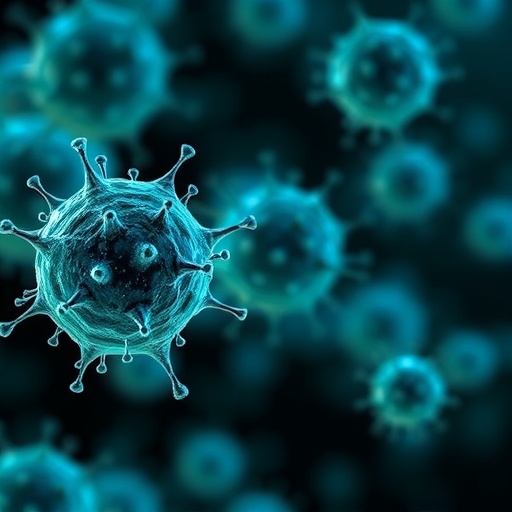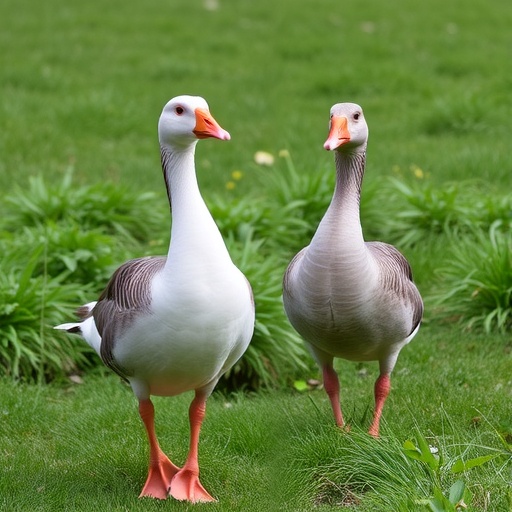
Scientists have long been fascinated by the remarkable abilities of the Asian weaver ant, scientifically known as Oecophylla smaragdina. These industrious insects are renowned for their intricate nests, woven from silk produced by their larvae. Recent research conducted by A. Dolai and A. Das has shed light on a significant aspect of these ants: the properties of their silk and how these change over time in relation to environmental stresses. This work is particularly timely as it offers insights into how these ants adapt their nesting strategies to protect against natural calamities, a topic of great ecological relevance in today’s climate-challenged world.
The study meticulously explores the composition of the silk secreted by the larvae, highlighting variations in its strength, elasticity, and adhesive properties. These attributes are crucial, as they dictate the durability and efficiency of the nests they construct. Understandably, as environmental conditions fluctuate, so too must the properties of the silk. This adaptability is essential not just for the continued existence of the weaver ants but also for the myriad of ecological interactions they engage in.
Silk, as a natural fiber, harbors extraordinary potential for applications beyond the ants themselves. The properties of the silk produced by these ants present interesting questions for biomimicry. By understanding how these insects modify the characteristics of their silk in response to changing conditions, scientists hope to mimic such properties for human use. This could lead to the development of advanced materials that possess similar resilience and adaptability—qualities that are increasingly valuable in various industries, from textiles to engineering.
The research team employed a longitudinal approach, monitoring the silk over different seasons and environmental scenarios. By evaluating samples taken from various nests, they were able to track changes in silk composition, a process that revealed fluctuations tied directly to humidity and temperature. Such analyses proved that the ants are not merely passive actors in their environment; rather, they actively modify their building materials in response to climatic factors.
Further complicating this dynamic is the social structure of the weaver ant colonies. With thousands of individuals working in unison, the role of collective behavior cannot be underestimated. It’s a true marvel of nature that these ants communicate and collaborate effectively, allowing for rapid construction and repair efforts. When faced with threats such as storms or heavy rains, the ability of the colony to quickly adapt their silk’s properties becomes imperative for ensuring their survival.
A critical aspect of the research is its implications for understanding how species cope with climate change. As extreme weather events become more frequent, insights gleaned from the Asian weaver ant’s silk adaptation strategies may inform conservation efforts for other species. By examining the nuances of their silk production under stress, ecologists could better predict and mitigate the effects of climate fluctuations on various habitats.
One of the standout findings from Dolai and Das’s research is the relationship between larval diet and silk quality. The nutritional inputs of the larvae directly correlate with the properties of the silk produced. This interaction highlights the importance of a stable ecosystem and the potential vulnerability of these ants if their foraging is impacted by environmental changes. As ecosystems face degradation through human activity and climate crises, the weaver ants’ resilience is put to the test, serving as a bellwether for other species.
The study further underscores the sophisticated nature of insect communication. Weaver ants utilize pheromones to coordinate activities among the nest members, which could include signaling the need for stronger silk during adverse weather. This interconnectedness within the colony enhances their ability to respond collectively to environmental challenges, showcasing the brilliance of their social organization.
Moreover, understanding the variations in silk properties allows researchers to draw parallels between the silk of weaver ants and spider silk, both of which have garnered interest for their strength-to-weight ratios. However, weaver ant silk differentiates itself through its construction techniques and environmental adaptability, adding another layer of complexity to the ongoing discussions surrounding natural fibers.
As the research continues, the implications of these findings broaden; they not only deepen our appreciation of the Asian weaver ant’s ecology but also inspire advancements in biomaterials. The ambition to replicate the versatility of ant silk could pave the way for innovations in sustainable materials, thus bridging biology and technology in unprecedented ways.
In conclusion, the work presented by Dolai and Das marks a significant contribution to our understanding of insect physiology and adaptability. Their explorations into the silk properties of the Asian weaver ant open up a fascinating dialogue about ecological resilience in the face of climate change. Important lessons emerge from this research that may lead to more sustainable practices and materials in our human world, echoing the vital interconnections shared across species in nature.
As scientific inquiry continues to unravel the complexities of the natural world, it is through studies like these that we begin to grasp the incredible capabilities of insects, turning our gaze towards solutions that reflect the ingenuity found in nature’s designs.
Subject of Research: Properties of silk produced by Asian weaver ants and their adaptation to environmental changes.
Article Title: Silk properties of Asian weaver ant changes over time: an understanding of nest protection from natural calamities.
Article References:
Dolai, A., Das, A. Silk properties of Asian weaver ant changes over time: an understanding of nest protection from natural calamities.
Sci Nat 112, 65 (2025). https://doi.org/10.1007/s00114-025-02019-6
Image Credits: AI Generated
DOI: https://doi.org/10.1007/s00114-025-02019-6
Keywords: Weaver ants, silk properties, environmental adaptation, climate change, biomimicry, ecological resilience.
Tags: adaptive strategies in social insectsant nest construction methodsAsian weaver ant silk propertiesclimate change impact on ant speciesecological interactions of weaver antsecological relevance of weaver antsenvironmental adaptation in antsinsect silk applications in technologylarval silk production in insectsnatural calamities and ant behaviorOecophylla smaragdina nesting strategiessilk strength and elasticity




